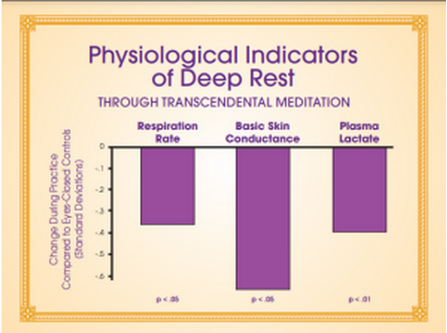
Note: This post is based upon a conversation with nursing researchers Joyce B. Perkins, PhD, St. Catherine University, St. Paul, Minnesota, USA, and Catherine Aquino-Russell, PhD, University of New Brunswick. Click here to hear that conversation.
During the 1970s, Amedeo Giorgi developed an innovative qualitative research method known as descriptive phenomenological research. Referred to as the Giorgi method, this approach aims to reveal the meaning of persons’ lived experiences by identifying essential themes expressed in their language. Descriptions of their “lived experiences” are grouped into specific groups or categories and then analyzed by viewing their words through the language of science of the researchers for deeper meaning.
By analyzing lived experiences through conversations, interviews and journaling, the Giorgi method is a powerful way to gain insight into persons’ actions and motivations. This kind of analysis offers a new depth of understanding of human behaviour and experiences.

Researchers Joyce Perkins and Catherine Aquino-Russell used the Giorgi method to examine the impact of Transcendental Meditation® (TM) on graduate nursing students earning a Doctor of Nursing Practice (DNP) degree, while working and raising families.
The question guiding this research was, “What is the meaning of the lived experience of graduate nursing students practising the TM technique?”
The students learned TM and then were asked to record in a journal once per week their responses to the prompt: “Please describe what it is like for you to practice the Transcendental Meditation technique twice per day while engaged in your graduate nursing teaching–learning journey.” They were invited to share as much or as little as they wished.
The authors reported the results of their research in the article Graduate Nurses Experience the Sacred During Transcendental Meditation, published in the International Journal of Human Caring,

TM allows the mind to experience a state of restful alertness. In this state, the mind becomes settled and relaxed while remaining awake and alert. The process of allowing the mind to settle down to its most peaceful state is known as “transcending”. Transcending is easy to achieve, even in the first TM meditation, which was noted by nursing student participants of the study.
Perkins elaborates that the experience of transcending during TM carries the experience of expanded awareness, a sense of unboundedness, and a feeling of love and compassion. After meditation, individuals come out of “their smaller ego that walks through everyday life” and experience a larger sense of Self, giving one an expanded awareness of the world. This expanded awareness and experience of love and compassion are what give rise to the sacred experience.

The word ‘sacred’ has various meanings, but one definition offered in Merriam-Webster’s dictionary is “highly valuable or important”.
The researchers found that after 20 minutes of TM practice twice daily, the feeling of expansion, alignment, love, and compassion experienced during TM carried into the students’ work life, creating an underlying sense that their work as nurses was “highly valuable or important”, or, in other words, sacred.
The students almost immediately experienced this level of development and growth. Aquino-Russell noted this experience of the sacred developed very quickly—within just a few months.
The students also found themselves more psychologically and physically present in their activities. They felt a deeper connection to their patients, family members, and colleagues and carried a sense of always being connected and of never being alone.

This expanded feeling in the nurses of the sacred and of being connected came hand-in-hand with a change in perspective on how to do their job, shifting from primarily task-oriented to more people-oriented—more relationship-focused. Perkins commented that the nurses felt more clarity of thought and could tap into their innate wisdom, like “riding on a wave, or being assisted by the whole universe.”
While linear and hierarchical thinking is essential, especially in medicine, there is more that can be brought to the nursing job. Feeling a sense of the sacred—feeling that one’s role and relationship with patients and colleagues is highly valuable—requires more than just knowing the steps involved to execute a task, more than just thinking linearly and rationally.
Perkins and Aquino-Russell noted that the nursing students had access to another level of information due to TM practice. This level included “all the emotions, belief systems, and felt space we all participate in and is always present. It creates a sense of universal participation in the moment and a sense of flow–an effortless effort.” In short, the nurses felt they were working in a “larger shared space that is sacred.”
The authors said practising TM brought “profound rewards for nursing student participants when dealing with stress and anxiety related to work, study, self, and family concerns. We recommend including TM in the educational experience of nurses at any level of practice”*
In the conclusion of their article, the authors wrote: “TM is a simple technique, easily learned by novice meditators, that brings profound improvements in quality of life. When practising this simple technique, participants found themselves authentically present. Feelings of bliss, peacefulness, and integrity potentiated the experience of sacred space amid daily stressors, while care, compassion, grace, gratitude, and appreciation resided within. We recommend that nursing students practice this type of meditation to experience their highest possible level of consciousness, care, compassion, and performance in nursing and in life”.*
It seems clear that at a time when the challenges facing nurses are greater than ever, adding the Transcendental Meditation technique to nurses’ daily routine is vital for their professional and personal well-being. When such an elegantly simple tool as TM is available to nurses to alleviate burnout and promote spiritual wholeness, it is vital that we make TM available right now to as many nurses as is possible. The health of our nurses, patients, and health system may depend upon it.
*Perkins J.B., Aquino-Russell C. Graduate Nurses Experience the Sacred During Transcendental Meditation. International Journal of Human Caring 21:4, 2017, p. 169
